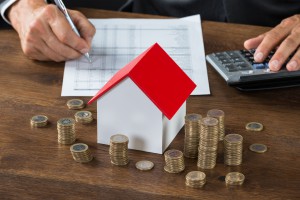Here’s a question we’re asked from time to time: how do you decide between capital growth and cash flow?
On a recent Real Estate Talk show I spoke with Michael Yardney, from Metropole Properties, who gave us his thoughts on the matter.
HERE’S A TRANSCRIPT OF THE INTERVIEW
(Alternatively you can listen to the short podcast at the top)
Transcript:
Kevin: How do we decide between capital growth and cash flow?
Michael: There are clearly two camps. 
There are the cash flow followers, and they suggest you should invest in property that returns more cash than it expends.
In other words, they want rental returns that give them some cash in their pocket every month.
And then of course, there’s the capital growth crew.
They favor investing in capital growth over cash flow.
In other words, you buy properties that produce above-average capital growth in value, and usually you have to carry some negative gearing along the way.
If there was only one way to do it, both wouldn’t exist.
There’s room for both of them.
There are three phases of your property journey.
The first one is the accumulation phase. 
The stage where you build up a high-growth portfolio of investment-grade properties.
That’s building your assets – asset accumulation – and that takes 10 or 15 years.
That’s why capital growth comes first.
Then there’s the consolidation phase, where you slowly lower your loan-to-value ratios, and conversely, that increases your cash flow.
Then the lifestyle phase.
This is where you live the life you want to live using the proceeds of your cash machine.
But most people get it the wrong way around and they look for cash flow first.
A really good example was a couple of weeks ago a new investor – somebody who hadn’t invested before but picked up one of my books at the airport – came along and said to us:
“Michael, I want to buy an investment property because I’m actually cutting back my hours, I’m going to have another baby, and I want the property to pay for the school fees for my first child.”
She assumed, from a thing she’d read in the magazines that she could actually buy property and it would spit out enough money to pay for school.
Then others say, “I’d like to buy an investment property because it’ll pay for my holidays.”
Residential real estate doesn’t work that way.
Residential real estate is a high-growth, relatively low-yield investment, and if you do get some cash slow, it’s not hundreds of dollars a week, it’s not enough to change your lifestyle
Kevin: You’ve actually swung that whole argument around.
But I can really understand why someone who’s just starting out, maybe limited cash flow, looking at it and saying, “Well, I have to make this thing pay off so that I can actually let it grow.”
Michael: The common philosophy is that “I need more cash flow.”
That’s what most Australians say, because the money runs out before the month does.
The trouble is if you look at the result of most investors, you’re going to find that half sell up in the first five years, and of those who stay in the property game, less than 8% own more than two properties – 92% never get past their second property – which means that if you do what everyone else does, if you listen to what everyone else says, you’re going to end up getting the same results.
It’s just too hard to get the deposit for your next property out of a couple of dollars a week positive cash flow or out of your savings.
So, the way you grow a substantial portfolio is through capital growth.
You actually can have your cake and eat it too. 
What I’ve been proposing is that you buy a high-growth property, a property in an area where it’s going to have substantial capital growth and over time, rental return, and then you make it a high-yield property by adding value.
You’re going to increase the value of your property, but more importantly you’re going to increase the rent because it’s more attractive.
It’s going to give you good depreciation allowances.
And it’s very likely that you’re going to find a property that had a reasonable amount of negative gearing could well be cash flow neutral, or even a little bit cash flow positive, because you’ve manufactured the rental returns and the capital growth.
That’s having your cake and eating it too.
Kevin: Many people will just look at it and ignore the fact that as a property grows, or you get good capital growth, you therefore get a lot more equity in it.
You can then use that equity to gear, to help you get into the next property.
Michael: Exactly right.
And the other thing, of course, is as the property goes up in value, so does the rental. 
A high-growth property, over time, will have higher returns than a lower-growth property that isn’t growing as fast, even though it starts with a better return.
The other point is that you make your money in property in four ways.
You make it out of capital growth, you make it out of rental returns, you make it out of the tax depreciation and other benefits – not that that’s a reason to invest in it – and you make it out of forced appreciation by manufacturing some capital growth.
But capital growth is income.
Sure you can’t bank it in the short term, you can’t eat it, but capital growth is income because you can borrow against it, and in turn, you can use it to make more money.
Kevin: Thanks for your time, Michael.
Michael: My pleasure, Kevin.
![[Imported] WP Advertize it Free Strategy ad 10 July 2014 (Desktop #44800)](https://propertyupdate.com.au/wp-content/uploads/2014/07/m-propertyinvestors-18July2014.png)
No comments:
Post a Comment